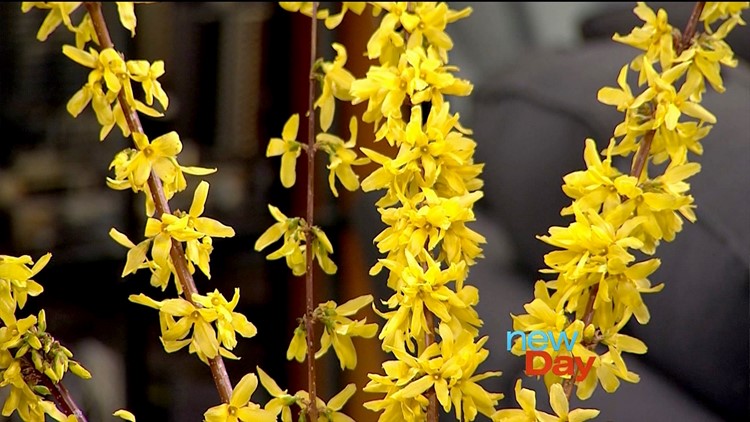With Spring around the corner, Ciscoe shows us how to prune the Forsythia.
To understand how to prune Forsythia (and most other shrubs that grow new shoots from the ground) it is necessary to understand how the blossoming occurs. Forsythia blooms in early spring on the shoots and branches that grew during the previous season. When a new shoot grows up during summer, it will bloom all along the branch next spring. The following summer, the shoot will branch out. The original shoot will never bloom again, only the small branches that grew out of the original shoot will bloom the following spring. Every year smaller branches will grow out of the branches that grew the previous summer, and the twigs that bloomed the spring before will never again bloom. Each summer the branches that will bloom the following spring get smaller and the quality and quantity of blooms are diminished.
The goal is to maximize the amount of new growth to maximize bloom. To do that, every year as soon as the bloom fades, symmetrically remove about 1/3 of the oldest branches by cutting them to the ground. That will stimulate lots of new shoots to grow up to take their place. Only allow a few well spaced of these to fill in, and remove the rest. The new shoots will provide an abundance of blooms, while the shrub will develop an open more attractive appearance. Resist the urge to lower the height of the plant by cutting back the shoots. That will only cause sprouts to grow from the ends of the branches and will ruin the appearance of the shrub. Left to grow naturally, the shoots generally bend over to give the shrub an attractive fountain shape.
If your forsythia has become way too big, or such a tangled mess that it is impossible to get the pruners inside to cut the canes, then a total renovation may be required. Cut back the entire shrub (all the stems) to within an inch from the ground. A gazillion new shoots will grow back, so cut off most of those, and only allow the desired number of well-spaced shoots to remain. Then beginning in the following spring, every year, right after blooming is finished, remove a third of the stems, allowing an equal amount of replacement shoots to take their place. Your forsythia should remain a manageable size with an elegant fountain like form and will bloom beautifully every spring.
P.S. Just so you know, there are now dwarf varieties of Forsythia available that tend to be much easier to deal with than the older tall-growing ones. You might want to replace the old thug with a better-behaved version!
Happy spring!
Ciscoe
Watch New Day Northwest 11:00 weekdays on KING-TV Ch.5 or streaming live on KING5.com. Connect with New Day via Facebook, Twitter, Instagram.



